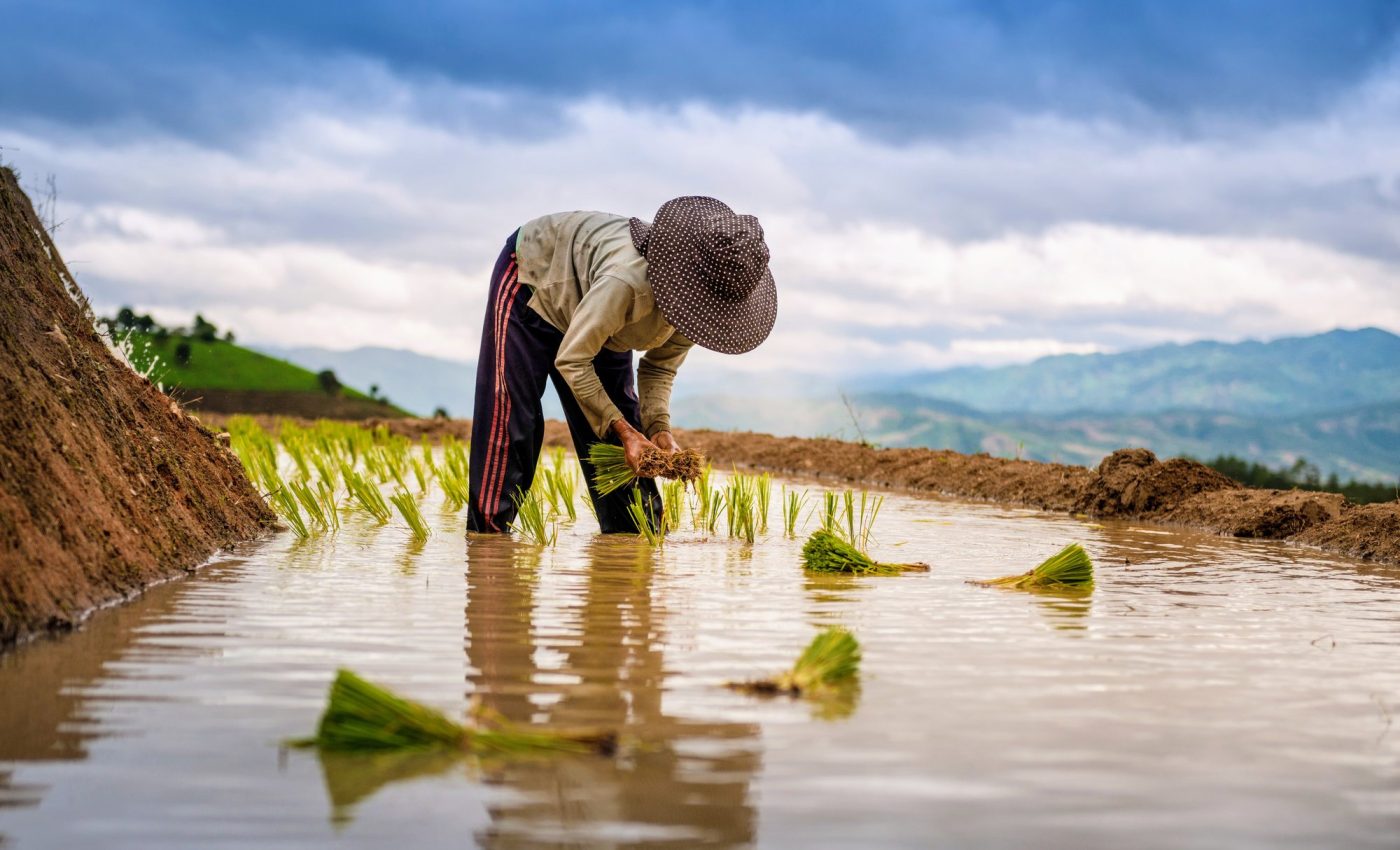
Removal of field margins reduces farmland biodiversity
A recent study published in the Journal of Applied Ecology has found that the removal of hedgerows and field margins covered by wild grass and flowers significantly reduces the diversity and abundance of arthropods in agricultural landscapes.
Researchers from the UK, Netherlands, and China conducted a six-year study on 20 rice fields in China, examining how these landscape changes impact rice pests and their natural enemies, as well as rice yield.
Natural field margins
Traditional Chinese smallholder fields are irregularly shaped and separated by areas of hedgerows, wild grass, and flowers. These features make using large-scale machinery difficult, resulting in low agricultural operation efficiency.
Consequently, many traditional farmlands in China are being consolidated to improve efficiency. However, these grassy margins and flowering vegetation provide crucial habitats for natural enemies of rice pests, such as spiders and ground beetles.
Frequent removal of field margins
“Hedgerows and field margins are frequently removed during the land consolidation procedure to create larger, rectangular fields and install concrete irrigation channels to facilitate the use of larger machinery. Our study suggests that removing these habitats negatively affects arthropod communities,” said senior author Yi Zou, an expert in landscape ecology and biodiversity conservation at the Xi’an Jiaotong-Liverpool University (XJTLU).
Greater diversity in traditional farmland
The researchers collected 141,587 individual arthropods from 80 taxonomic families, discovering that traditional farmland supported significantly higher abundance and diversity of rice pests’ natural enemies compared to consolidated land.
Interestingly, there were no significant differences in the number of rice pests or rice yield between traditional and consolidated fields.
Land consolidation and rice arthropods
“Land consolidation removes the natural vegetation of traditional farmlands that can provide nesting habitats and food sources for the natural enemies of rice pests. But there is a lot we still don’t know, such as how land consolidation affects different groups of rice arthropods. Long-term monitoring and detailed assessment of land consolidation is still needed,” Zou explained.
The research group also experimented with insecticide application on half of each field, finding that it decreased the diversity and abundance of pests and natural enemies in both field types. However, fields not sprayed with insecticide experienced a 10.8% decrease in rice yield.
Using field margins to increase farmland biodiversity
The study supports agri-environmental measures (AEM) like using flowering plants in field margins to increase farmland biodiversity and mitigate the negative impacts of land consolidation. While widely implemented in Europe, AEMs are rarely used in China.
“Our agricultural biodiversity monitoring in this study serves as a critical tool for assessing the impacts of land consolidation and the effectiveness of AEM on biodiversity. These measurements are needed before proposing land management recommendations for an appropriate AEM,” Zou said.
“As a result of our findings, we recommend the implementation of AEM or re-establishing field margin vegetation during the consolidation process to mitigate the potential negative effects on rice arthropod biodiversity.”
“This study is noteworthy because of the quality of its data and the breadth of influential factors we were able to investigate. It has been really interesting to disentangle the effects of farmland consolidation, of pesticide application, and of seminatural habitat beyond the farm,” added co-author Jenny Hodgson, a conservation biologist at the University of Liverpool.
Further research is needed
Dr. Shanxing Gong, the study’s lead author and a postdoctoral researcher at Peking University, acknowledges that biodiversity is not the only concern for farmers.
“The trade-off between biodiversity improvements with labor efficiency, yield, and pest control is a balance that has to be finely tuned to ensure maximum profitability, and these factors will always need to be considered,” said Dr. Gong.
“While we did not observe a direct correlation between the increase in the number of rice pests and the reduction of their natural enemies due to land consolidation, further investigation into the effectiveness of natural enemies in biological pest control is necessary before implementing AEM strategies.”
Understanding the long-term impacts of land consolidation
Furthermore, the researchers found no decrease in rice yield in traditional fields compared to consolidated farmland.
“The impact of AEMs on yield depends on many factors, including agricultural management intensity, soil fertility, and pesticide application, that all need to be taken into account when assessing their suitability for land management,” added Dr. Gong.
This study highlights the need for continued research and monitoring to understand better the long-term impacts of land consolidation and the potential benefits of agri-environmental measures in maintaining arthropod biodiversity and sustainable agricultural practices.
—–
Like what you read? Subscribe to our newsletter for engaging articles, exclusive content, and the latest updates.
Check us out on EarthSnap, a free app brought to you by Eric Ralls and Earth.com.
—–













